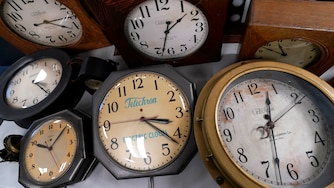For Baltimore natives, your first crab cake with mustard is something you’ll never forget, but some of the city’s once-popular foods have faded in time.
The Baltimore hot dog and forgotten recipes
Attman’s Delicatessen is one of the last places in the city to serve the Baltimore hotdog, dressed in sweet relish, raw onions, Attman’s seeded mustard and fried baloney.
Attman’s is the longest running, family-operated Jewish deli in the country, according to Marc Attman.

“It’s not just the hot dogs — it’s the hot dog with the baloney on it,” Attman said.
Kara Mae Harris has spent years studying and unearthing forgotten recipes all over Maryland with her blog, Old Line Plate, with a database containing hundreds of recipes.
“The city’s food culture basically was built on slavery,” Harris said. “They took these dishes that people would serve on plantations, and stuff like the Maryland fried chicken and the terrapin, and there was a really big catering profession.”
Baltimore’s culinary popularity rose from the “caterers” of the 1900s — the lineage of formerly enslaved African Americans who essentially pioneered the majority of the “Southern cuisine” still eaten today.
“It takes a lot of work and years to learn these skills to cook this food and to run these businesses, but they were pigeonholed” and treated like they were born to make these foods, Harris said.
While the so-called caterers played a major role in developing Baltimore’s food and despite the fact that we might be better off without the diamondback terrapin on our menus, dishes like Attman’s Jewish bologna-dogs are endangered.
“Demand is really the main thing,” Harris said.
Smearcase
But there’s hope for some of the other oldies that Baltimore’s still holding onto.
Harry Herman runs Herman’s Bakery in east Baltimore, one of the last places in the city to still serve a smearcase — a cheesecake that’s been slowly making its way back into people’s stomachs and hearts.
“The smearcase now has grown to have an appeal for the general public, that’s our most popular cheesecake that we make,” Herman said.
The bakery has been owned and operated by the Herman family since 1923, when they opened their first bakery in Patterson Park in East Baltimore, according to Herman.
During that time, the neighborhood was occupied mostly by Polish and German immigrants.
“The smearcase and the peach cake are both from those German-style bakeries, and I was worried about the smearcase because you can only get it at like two places that I know of,” Harris said.
Coddies
Coddies are also among the foods that people are trying to preserve in the city.
Harris said a company called Cohen’s Coddies controlled a lot of the early production of codfish cakes in Baltimore.
“It’s more something you just get when you’re out and about — like a street food,” Harris said. “I have recipes for crab cakes because people make them at home, a lot but coddies, not as much.”
Coddies are one of the more popular quintessential Baltimore menu items at his deli, Attman said.
The constant change in Baltimore’s favorite foods is a testament to changing tastes, Harris said.
“We just have a unique combination of all these things and these influences,” Harris said. “Now we have new groups of people coming here ... all these foods they end up combining.”





Comments
Welcome to The Banner's subscriber-only commenting community. Please review our community guidelines.